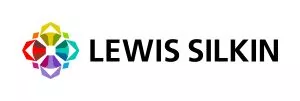- within Cannabis & Hemp, Law Practice Management and Privacy topic(s)
- with readers working within the Retail & Leisure industries
UK Supreme Court decisions relating to patentability are few and far between, and are significant for that reason alone. However, this week's proceedings between Emotional Perception AI (EPAI) and the UK Intellectual Property Office (UKIPO) strike at the heart of a broader consideration – is patent law is keeping up to speed with modern technology, in today's world of artificial intelligence? It's an ironic question, given the very purpose of patent law.
The Supreme Court has already considered the question of whether AI can be named as an inventor when submitting a patenta application. Here, the question at issue is linked more closely to the AI itself, and the evolution of computer-implemented inventions from traditional 'if-then' programming logic towards a configuration of weights in an artificial neural network (ANN). The Supreme Court is considering whether or not an artificial neural network is indeed a computer, and whether existing patent law relating to patentability of computer-implemented inventions is applicable. Whatever the outcome, the clarity provided by the decision will be welcomed.
How did we get here?
In November 2023, significant debate was generated when the High Court ruled that an artificial neural network tool for media file recommendations (e.g. a song) was potentially patentable. This marked an unexpected departure from the UKIPO's established approach of excluding computer-implemented inventions (CIIs) unless they make a 'technical contribution'.
The application at the centre of the ruling was filed by EPAI in 2019. EPAI's invention uses both objective and subjective data to train an ANN, mimicking human assessment to provide personalised recommendations based on 'emotional similarity'. Following refusal of the application by the UKIPO, the High Court found that ANNs did not constitute computer programs under the meaning of section 1(2) of the UK Patents Act 1977, and thus were not excluded from patent protection. The judge further remarked that, in any case, the identification of recommendations sent to the user provided a technical effect external to the computer and would thus be patentable. In response, the UKIPO updated its statutory guidance to align with the High Court's decision, adopting the less-restrictive approach by instructing examiners not to object to ANN-related claims on the basis that they were computer programs.
However, as we reported previously, the UKIPO appealed this decision and in 2024 the Court of Appeal (CoA) reversed the High Court's decision, ruling that ANNs are in fact computer programs regardless of whether they are implemented via hardware or software. In this particular case, it was ruled that EPAI's ANN amounted to nothing more than a computer program without a technical contribution. This reversal created uncertainty for applicants who had adjusted their IP strategies based on the earlier guidance.
The Supreme Court Hearing
The Supreme Court granted EPAI leave to appeal the decision of the Court of Appeal, and the hearing took place over two days on 21 and 22 July 2025. While we don't expect a decision until the Autumn, we have been following the case closely and the following are highlights of some of the points that were debated:
EPAI's submissions
- There is concern arising from the CoA's judgment, in which broad definitions of 'computer' ('a machine which processes information') and 'computer program' ('a set of instructions for a computer to do something') could potentially be seen to extend the computer program exclusion to an unreasonably wide range of devices.
- An ANN should not be considered to be a program for a computer because, once the ANN is trained, it comprises a set of fixed weights and biases. In this connection, the set of weights and biases are not a sequence of instructions, therefore are not a program for a computer.
- The UK should move towards the approach of the European Patent Office (EPO), in which patentability exclusions are assessed in keeping with the 'two-hurdle' test of T641/00 (COMVIK), which was confirmed in G1/19. The first hurdle determines whether the claimed invention includes at least one technical feature (such as hardware), which may exist alongside non-technical features and does not consider what may already be known. The second hurdle determines whether those technical features identified in the first hurdle carry an inventive step by providing a technical solution to a technical problem.
- The current UK approach (the four-step Aerotel test, in which the first step is a determination of whether the technical contribution constitutes excluded subject matter) provides an overly limiting view of the technical contribution. It does not accurately reflect the contributions of a claimed invention in context of the invention 'as a whole', i.e. including the known features.
- The claimed ANN is inventive as it interacts with computer hardware to provide better media file recommendations than existing techniques.
UKIPO's submissions
- There is no need for the Supreme Court to consider a change to the current approach to patentability, as the purpose of section 1 of the Patents Act is to exclude protection for computer programs as such, irrespective of whether they apply to quantum computers and AI of the future in the same way as to analogue and digital computing of the past and present.
- The weights and biases of an ANN should be considered a computer program. This is at least because the weights and biases can be separated from the hardware and applied to multiple different computers, causing each of those computers to respond in a particular way on receipt of input data. As a result of this response, the weights and biases were instructing the computer to do something and therefore do amount to a computer program.
- Adoption of a two-hurdle test for patentability, as proposed by EPAI, would result in a mix of the first hurdle of the two-hurdle COMVIK approach with the UK's well-established Pozzoli test for inventive step, thus creating a "Frankenstein" approach in which the exclusions set out in section 1(2) could be bypassed by the presence of any hardware.
The Chartered Institute of Patent Attorneys (CIPA) and IP Federation (IPF) have jointly filed an intervention in support of EPAI, advocating for harmonisation between the UKIPO and the EPO in assessing the patentability of CIIs. In particular, the Supreme Court is called upon to reconsider the UK's patentability test for CIIs in light of the EPO Enlarged Board of Appeal's decision in G1/19, which issued in 2021 and clarified the EPO's approach to CIIs. In particular, the five AT&T signposts, used, for example, to identify a technical effect on a process outside the computer, are prescriptive and increasingly outdated.
The intervention places emphasis on the impact of the pending UKSC decision on businesses and inventors, who may be at risk of facing legal uncertainty if the UK approach to CIIs diverges from the European approach.
This reflects the submissions of the interveners, in which the view was taken that the five AT&T signposts are prescriptive and "increasingly outdated". In EPAI's case, it was asserted that their ANN is inventive as it interacts with computer hardware to provide better media file recommendations than existing techniques, thus passing the second hurdle of the two-hurdle approach since the invention, as a whole, provides a technical solution to a technical problem.
Conclusions
The Supreme Court's decision will be pivotal in determining the future landscape for AI-related patents in the UK. The decision will not only impact the strategies of businesses and inventors but also influence the UK's position in the global AI industry. So, until the final verdict is handed down, we, along with the stakeholders, will wait with bated breath.
A decision upholding the Court of Appeal's ruling that an ANN, whether implemented by hardware or software, is a computer, will confirm the requirement to identify a technical contribution to support a case for patentability of an ANN, as is the case for any computer-implemented invention. This approach is consistent with case law of the EPO, and is one with which patent attorneys are already well-versed.
On the other hand, a decision overturning the Court of Appeal's ruling will be much more eye-catching, and would signal a significant departure from current practice. It would broaden the opportunities available to use the UK patent system to protect AI inventions implemented using ANNs. The UK's position would contrast with more restrictive patentability requirements at the EPO/ Many in the UK would see this as ensuring that patent law is indeed embracing technological change, with the UK taking a significant lead in its evolution.
The content of this article is intended to provide a general guide to the subject matter. Specialist advice should be sought about your specific circumstances.



